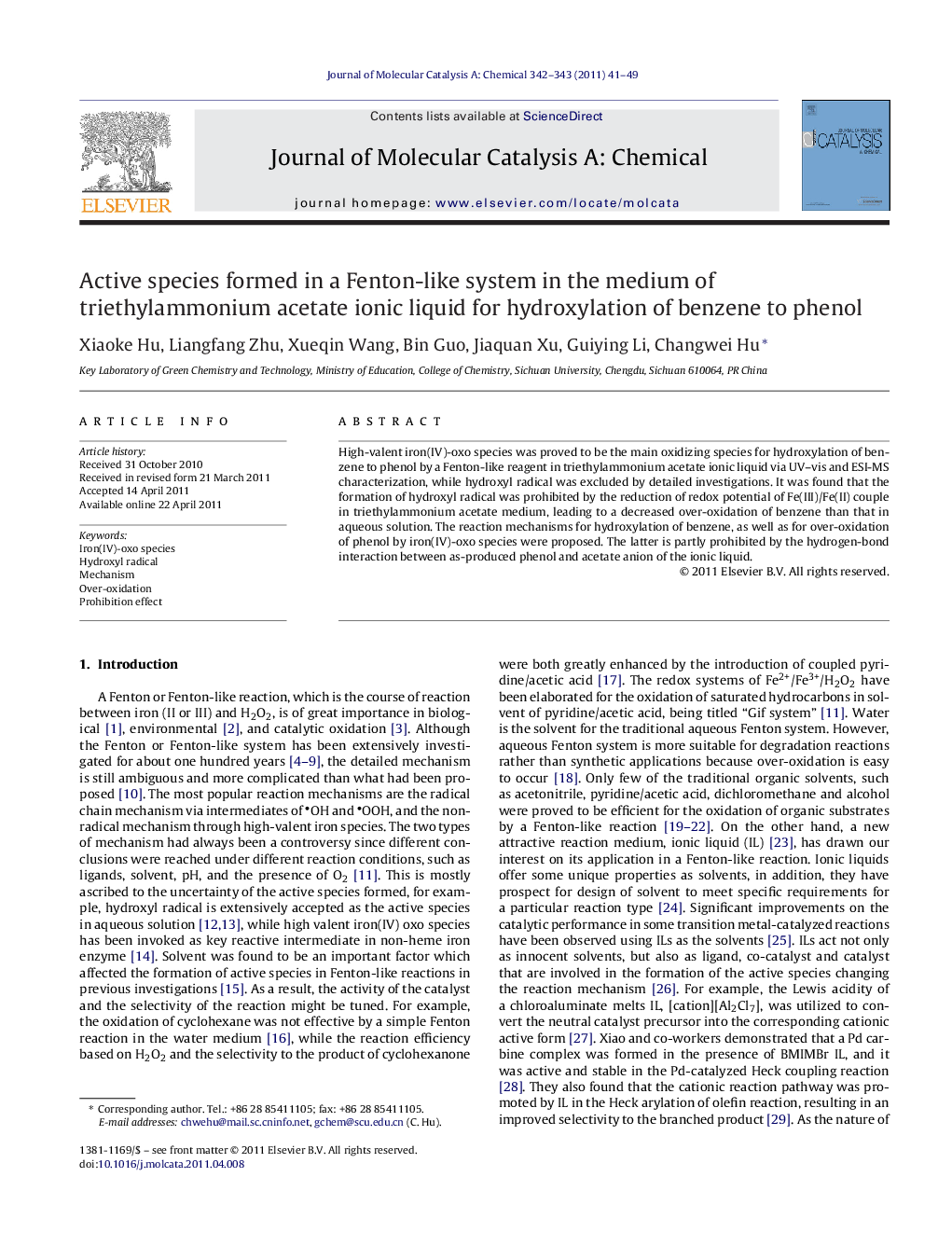| Article ID | Journal | Published Year | Pages | File Type |
|---|---|---|---|---|
| 66303 | Journal of Molecular Catalysis A: Chemical | 2011 | 9 Pages |
High-valent iron(IV)-oxo species was proved to be the main oxidizing species for hydroxylation of benzene to phenol by a Fenton-like reagent in triethylammonium acetate ionic liquid via UV–vis and ESI-MS characterization, while hydroxyl radical was excluded by detailed investigations. It was found that the formation of hydroxyl radical was prohibited by the reduction of redox potential of Fe(III)/Fe(II) couple in triethylammonium acetate medium, leading to a decreased over-oxidation of benzene than that in aqueous solution. The reaction mechanisms for hydroxylation of benzene, as well as for over-oxidation of phenol by iron(IV)-oxo species were proposed. The latter is partly prohibited by the hydrogen-bond interaction between as-produced phenol and acetate anion of the ionic liquid.
Graphical abstractHigh-valent iron(IV)-oxo species was the main oxidizing species in a Fenton-like system in triethylammonium acetate ionic liquid.Figure optionsDownload full-size imageDownload high-quality image (113 K)Download as PowerPoint slideHighlights► The iron(IV)-oxo species is the main active oxidizing species. ► Hydroxyl radical was promoted with the addition of excessive H2O. ► Over-oxidation of phenol is partly prohibited by the hydrogen-bond interaction. ► Hydroxyl radical leads to an increased over-oxidation of phenol.
